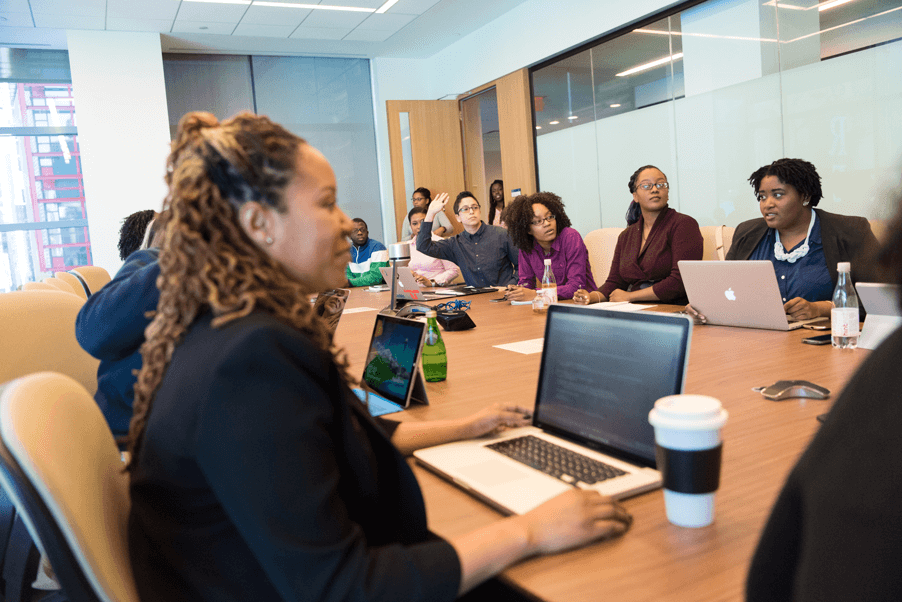Boost Engagement. Boost Productivity. Boost Retention.

Thanks to the trifecta of rapidly emerging new technologies, a talent scarcity of epic proportions, and a roller-coaster economy, most American businesses have drifted into survival mode. Given the state of the world over the past couple of years, that is both understandable and commendable. After all, if you’ve been able to weather the past couple of years and keep the doors open – or, even better, managed to grow – you’ve beaten the odds.
But that’s not exactly a winning recipe for employees.
With the talent crunch in full effect, many employees have been forced to absorb workloads to compensate for missing peers. Many more wrestle with challenges outside the four walls of the business, including those “sandwich generation” workers who need to balance taking care of aging parents, their own children, and work responsibilities.
The simple fact of the matter is that in order to attract and retain talent in today’s economy, employers and HR pros must start thinking outside the box. The bedrock elements of the employee experience – competitive wage, comprehensive benefits, and the like – still hold true, but the “same old, same old” approach to keeping employees engaged must evolve.
To that end, we’ve pulled together a “Top 10” list of actions, activities, and programs you should consider when creating the ultimate employee experience for your organization.
-
Prioritize Learning & Development
According to market research firm Forrester, 71% of employees wished their organization offered more training. That’s a significant indicator that your workers want to invest additional time, energy, and effort into your organization… they’re just lacking the means to do so. Working with employees – both as a group and on an individual basis – to understand where they’re having challenges, where they want to grow, and how they want to play a larger role within the organization will foster a greater sense of understanding and give you much-needed cues into how you can develop a more comprehensive training program that allows them to achieve those goals. Paralleling this with a Learning Management System (LMS) – an online resource that allows employees to expand their learning at their own pace and on their own timetable – can move these initiatives from ideas to action. -
Develop a comprehensive onboarding process
Too many organizations focus solely on the administrative aspects of the onboarding experience – tax filings, benefits selection, and the like. That’s undeniably important, but the onboarding process is an excellent way to introduce new hires to their tasks and immerse them in your company's culture and values. The helps to ensure employee excitement remains high and doesn’t go away once the Honeymoon period is over.
-
Embrace flexible scheduling strategies
In the trades, the concept of teaming apprentices and master craftspeople is a proven way to ensure new hires learn their role at a deeply practical level, flattens the learning curve, and dramatically minimizes the stress and anxiety that often accompanies starting a new job. This concept can (and should) be extended to other roles as well. From the shop floor to the corner office, teaming newer employees with more seasoned professionals can pay dividends across the board. Further, creating schedules that empower employees to have greater flexibility so they can accommodate personal demands – doctor appointments, parent-teacher conferences, and other similar activities – will both minimize unplanned absences and reinforce that your organization cares about the employee as a person, not just as a worker.
-
Identify (and proactively address) skills gaps
In some industries – namely manufacturing, nursing, and the trades – closing the skills gap has been an ongoing battle. Today, with the advent of AI and other advanced technologies, the skills gap is likely to impact an even broader range of roles and make existing gaps even wider. An internal audit of skills that are needed, skills that are present in-house, and identifying what it takes to close that gap – with a high degree of specificity – will give you the information you need to attack the problem in a practical and proactive way. It can also help you determine the right staffing and recruiting strategy going forward. For example, do you need more part-time help, full-time help, contract workers, or outsources to get the job done? How you answer these questions can have a significant impact on your organization’s operational and financial strategy.
-
Introduce upskill/cross-skill programs
As business needs evolve, so too should your employee mix… and instantly moving toward opening new requisitions and aggressively recruiting new talent isn’t necessarily the best (or most cost-effective) way to go. Leveraging training programs to help employees acquire new in-demand skills so they can move into new roles sends a powerful message: your growth within this company is not constrained by the role you take when you start. We frequently see this dynamic in industries (such as retail) where employees who were hired into pick, pack, and ship roles during the height of the pandemic are now no longer needed in such high numbers, but emerging AI-fueled roles place a greater demand for roles with IT and more data-centric skills. Rather than institute a round of layoffs in one area and massive re-hiring in another, re-skilling individuals and filling roles from within can accelerate growth, minimize the negative impact on your brand, and ultimately create a more positive work environment for all.
-
Implement a formal talent management strategy and program
Talent management is all about considering the full life cycle of the employee experience – from recruiting and retaining to developing and advancing individuals within your organization. This should include formal performance reviews, of course, but the most effective way to manage talent within your organization is to ensure managers are consistently having 1:1 meetings with team members so they can identify and address areas of concern, identify when an individual is ready to step-up and take on larger responsibilities, and everything in between. Proactively addressing talent in such a way helps you to avoid unpleasant surprises from a personnel perspective, but more importantly, it helps to define career paths that benefit both your organization and the employees themselves. It’s a great way to highlight that you “walk the walk” when it comes to creating an environment that values individual achievement and goals.
-
Develop leadership skills
One of the fastest ways to kill the goodwill and momentum that accompanies promotions is to put employees into a more senior role without arming them with the training and skills they need to be successful within that role. As you identify opportunities for employees to advance in your organization, ensuring that you’re equipping them with the skills they need to be leaders – not just the nuts and bolts of how to do the job at hand – sets them up for success. How to lead teams, how to have tough conversations, how to identify and foster talent, and how to lead with empathy are all skills that were once considered “soft” but are now considered mandatory. Ensuring you have programs in place to mentor and guide new leaders as they grow is the best way to ensure your entire organization grows and evolves.
-
Implement succession planning reviews and strategies
Each employee brings a unique skill, aptitude, and function to the table. However, there are certain key roles where an unplanned vacancy can have a significant detrimental impact on your organization. When a key employee retires, you typically have a long enough runway to react. Other exit points – medical emergencies, individuals leaving to pursue other opportunities, and the like – can leave leadership teams scrambling and send ripple effects throughout the organization. Establishing and maintaining a comprehensive succession planning process, however, empowers you to identify and enrich internal talent so you’re better equipped to address these situations when they arise and quickly take action.
-
Foster an environment of continuous learning
Whether you’re a new hire right out of school or a seasoned executive who has been in a given role or industry for decades, the ability to continually learn, adapt, and grow will foster a sense of agility that is required to thrive in today’s fast-paced economy. Creating opportunities for all employees to stay up to speed on trends, technologies, and techniques can be simple, cost-effective, and even fun. Lunch-and-learn sessions, for example, can help individuals and teams learn more about what each department does and highlight the interdependency of teams. If you have an LMS in place, delivering access to a broader library of content is another great way to keep employees curious and growing.
-
Leverage the power of outsourcing to get it all done!
Some of the items listed in this Top 10 – such as scheduling, onboarding, and talent management practices – should be baked into the day-to-day operations of your business. Others – such as succession planning, re-skilling programs, and gap analyses – can be more episodic. In either case, teaming with a seasoned group of HR professionals with “been there, done that” expertise can make a huge difference. Congruity HR offers all of these services (and more) to busy HR professionals and the companies they serve.
For more information on how Congruity can help you, check out our full slate of services and support. Not sure where to begin? No sweat, we’ve got you covered! Just click here and book a zero-obligation discussion with one of our HR experts.
No matter how you tackle personnel challenges within this rapidly evolving world of work, Congruity HR is here to help.


